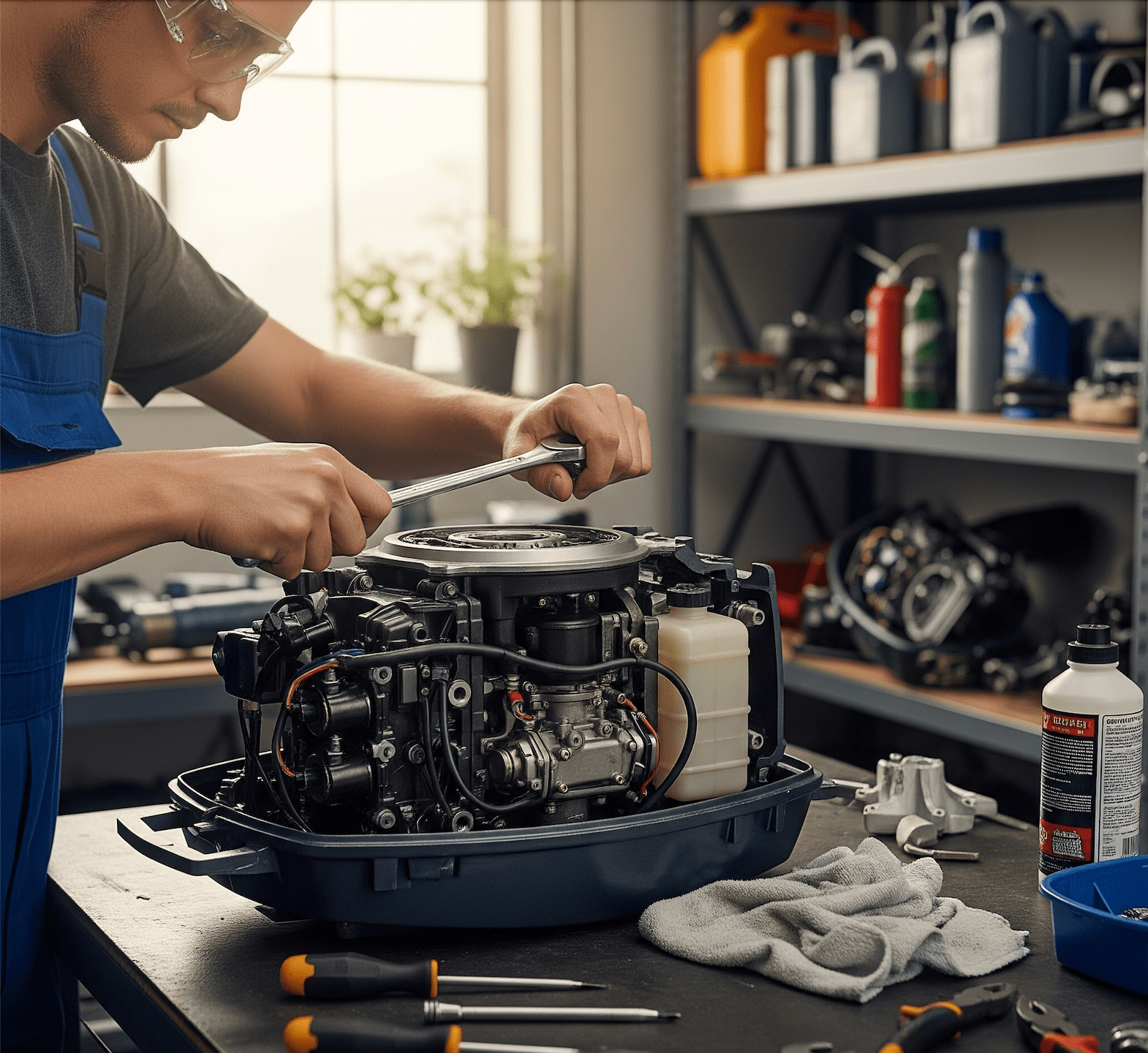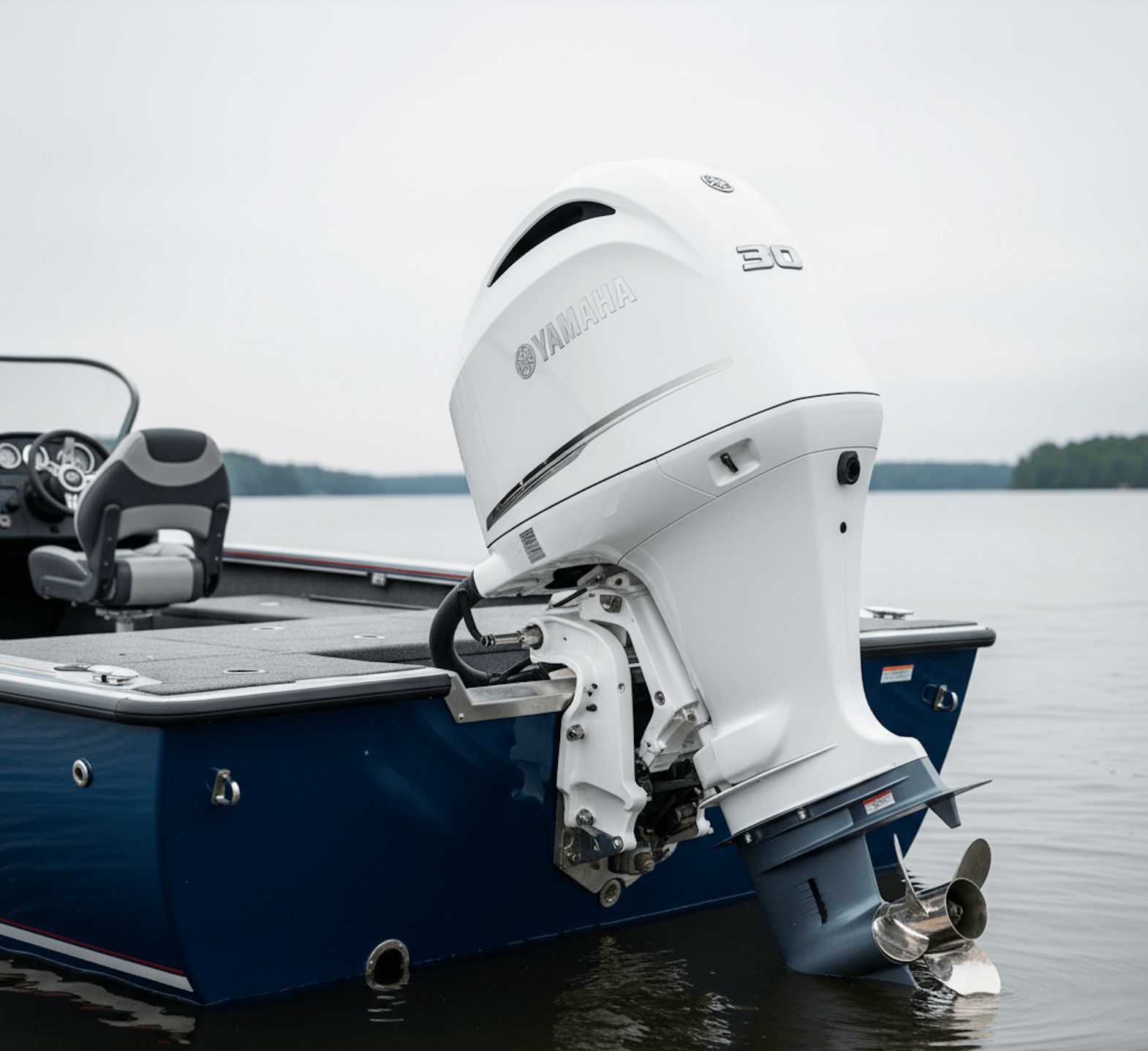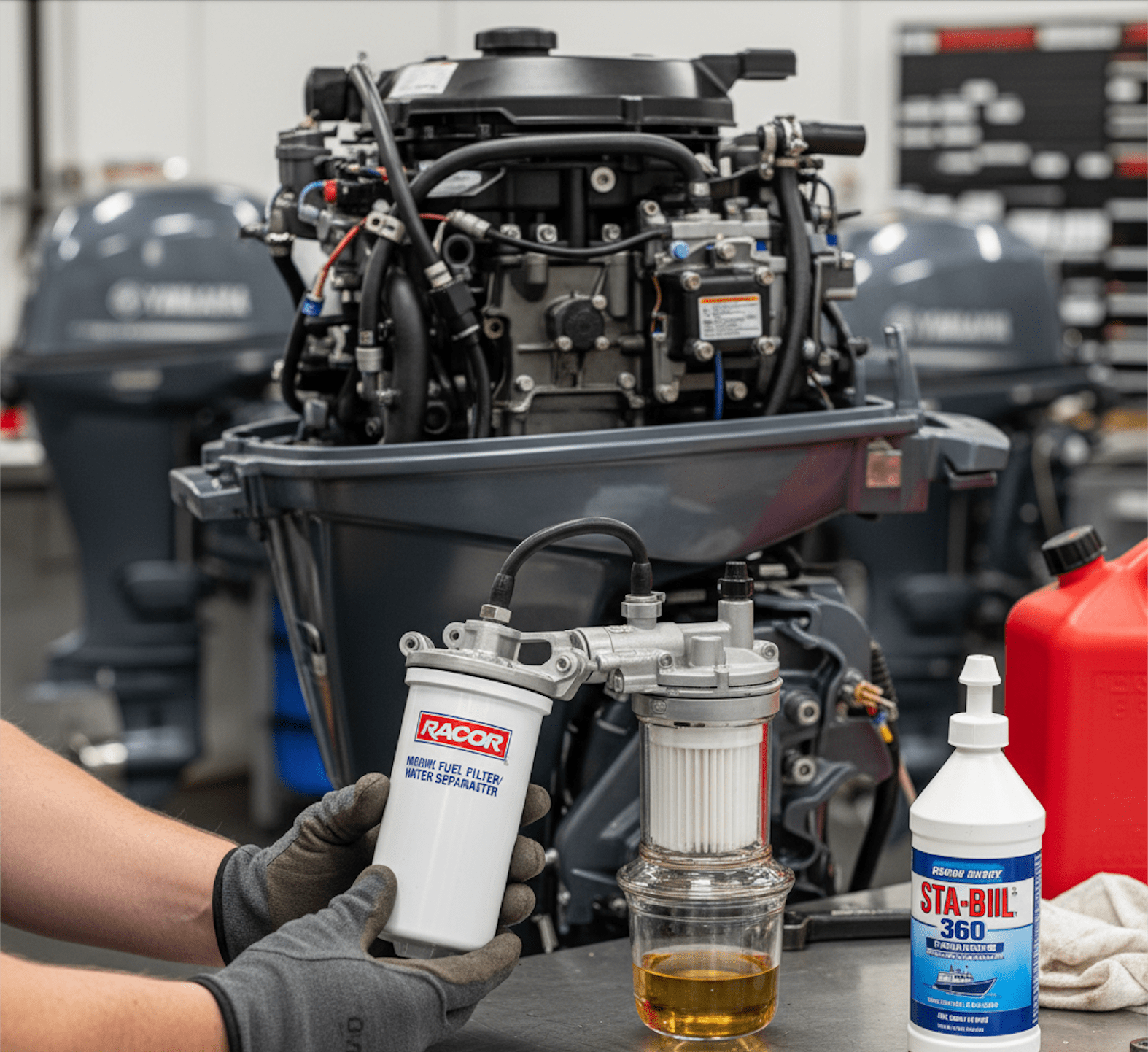Empowering yourself as a do-it-yourself (DIY) outboard mechanic is one of the most rewarding aspects of boat ownership. You save money, learn a valuable skill, and gain an intimate understanding of your marine engine. However, even the most enthusiastic DIYers can fall into common traps that, while seemingly minor, can lead to serious and costly mistakes.
At All Outboards, we're here to help you succeed. Our goal is to equip you with the right knowledge to confidently tackle your own maintenance. That's why we've compiled this list of common mistakes to avoid, ensuring your DIY efforts lead to a well-maintained, reliable outboard.
1. Using the Wrong Fluids and Parts
This is arguably the most common and damaging mistake a DIYer can make. It's easy to assume that all oil is the same or that a cheaper, non-marine part will suffice.
- The Mistake: Using automotive oil instead of marine-grade oil, using the wrong fuel octane, or installing non-OEM parts.
- Why It's a Problem: Marine engines operate under different stresses and temperatures than car engines. Marine-grade oil (like a 4-stroke FC-W or 2-stroke TC-W3 oil) is specifically formulated to handle these conditions. Using the wrong fuel can lead to engine knock, while a non-OEM part might not fit perfectly or function to the same standards, leading to premature failure.
- The Solution: Always consult your owner’s manual. Stick to the manufacturer's recommendations for oil, fuel, and replacement parts. It’s a small investment that prevents major headaches.
2. Neglecting the Water Pump Impeller
The water pump impeller is the unsung hero of your outboard's cooling system. It’s easy to forget about because it's out of sight, but its failure is a leading cause of overheating and catastrophic engine damage.
- The Mistake: Failing to replace the impeller on a regular schedule (typically every 1-3 years, depending on use) or not inspecting it during seasonal maintenance.
- Why It's a Problem: The rubber impeller blades wear down over time, lose flexibility, and can crack, leading to a weak or non-existent cooling water stream. This causes the engine to overheat, potentially warping cylinder heads or seizing the powerhead.
- The Solution: Replace the impeller proactively. Don't wait for a warning alarm. Make it a regular part of your maintenance schedule, especially if you boat in shallow or sandy water.
3. Improper Winterization or Off-Season Storage
Failing to properly prepare your outboard for storage can lead to more damage than a full season of use.
- The Mistake: Not flushing the engine, leaving old fuel in the tank, or failing to stabilize the fuel system before storing the motor.
- Why It's a Problem: Water left inside the cooling passages can freeze and expand in cold climates, cracking the block. Old, unstabilized fuel can degrade and gum up the fuel system, clogging fuel injectors or carburetors.
- The Solution: Follow a thorough winterization guide. This includes flushing the cooling system, adding a fuel stabilizer to the tank and running it through the engine, fogging the cylinders, and changing fluids as needed. This simple process ensures your engine is ready to go when boating season returns.
4. Overtightening Bolts and Stripping Threads
The urge to "make it tight" can lead to a DIY disaster.
- The Mistake: Using excessive force on bolts, especially on small components, leading to stripped threads, broken bolts, or cracked casings.
- Why It's a Problem: Stripped threads in a cylinder block, lower unit, or transom clamp can be extremely difficult and expensive to repair. They weaken the connection, leading to leaks or structural issues.
- The Solution: Invest in a torque wrench. This essential tool allows you to tighten bolts to the manufacturer’s exact specifications, preventing both over-tightening and under-tightening. It’s the sign of a true professional.
5. Ignoring Electrical and Grounding Connections
Electrical issues are a major source of outboard headaches, and they often start with poor connections.
- The Mistake: Failing to regularly inspect and clean battery terminals, ground wires, and wiring harness connections.
- Why It's a Problem: Corrosion on battery terminals and ground connections creates resistance, which can lead to starting problems, charging issues, and erratic behavior from your boat's electronics. A simple loose wire can cause a complete shutdown on the water.
- The Solution: Keep all electrical connections clean and tight. Use a wire brush to clean battery terminals and apply a thin layer of marine-grade grease or anti-corrosion spray. Periodically inspect the main engine ground wire and all connections for signs of wear or corrosion.
The Takeaway: Smart Maintenance Pays Off
Being a DIY outboard mechanic is about working smarter, not just harder. By avoiding these common mistakes and focusing on proactive, methodical maintenance, you'll ensure your outboard motor runs reliably, lasts for years to come, and holds its value. Your investment in knowledge and a few key tools is the best way to prevent overheating headaches and enjoy worry-free time on the water.
Subscribe to our newsletter and receive a selection of cool articles every weeks.







